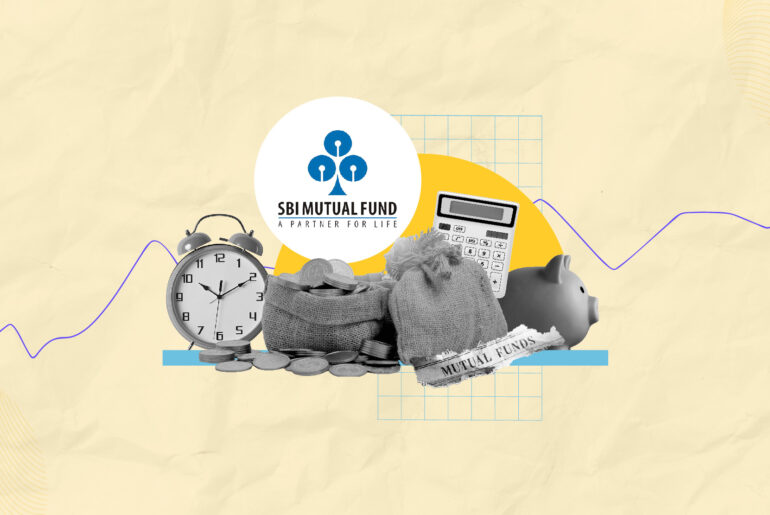Last Updated on May 24, 2022 by Anjali Chourasiya
Planning for retirement is essential to be able to live a comfortable life when you no longer earn a stable monthly income in the form of a salary. It is, therefore, prudent to invest a part of your salary in a retirement plan during your earning years for it to grow into a large retirement corpus. One such investment avenue aimed at retirement planning is the National Pension Scheme (NPS) launched by the Government of India. Is NPS good? We shall explore this in this article.
Table of Contents
What is the NPS scheme?
The National Pension System or NPS is a retirement-oriented saving scheme introduced by the Government of India. This market-linked scheme allows Indian citizens to participate in the capital market to earn attractive returns. By subscribing to the scheme, you can create a retirement corpus through regular investments. Moreover, after maturity, the scheme pays lifelong incomes in the form of annuities.
Features of the NPS scheme
NPS is a long-term financial instrument, with maturity when the subscriber turns 60 yrs of age.
The NPS scheme is run and administered by the Pension Fund Regulatory and Development Authority (PFRDA).
Citizens of India or Overseas Citizens of India (OCIs) can invest in the NPS scheme if they are aged between 18 and 70 yrs. NRIs can invest in the scheme provided they have a valid PAN card and a bank account in India.
There are two types of NPS accounts – Tier I and Tier II account
- Tier I account is a mandatory account that you have to open if you subscribe to the scheme. Tier II, however, is optional and can be opened only if you have a Tier I account.
- The minimum amount required to open a Tier I account is Rs. 500 and you are needed to make at least one contribution in a financial year. The minimum deposit in a financial year needs to be Rs. 1000. For Tier II accounts, the minimum amount required to open the account is Rs. 1000. Thereafter, the minimum investment in the account is Rs. 250.
There are two investment strategies – Active Choice and Auto Choice. Under the Active Choice, you can allocate your money to the pre-decided asset classes in percentages as per your choice (there is a cap to an equity investment of 75%), while under the Auto Choice, the asset allocation is automated.
Partial withdrawals are allowed after three years. You can withdraw up to 25% of the account balance for specific financial needs.
Upon maturity, 60% of the funds accumulated is withdrawable as a lump sum and the remainder is used to buy annuities that pay pension for a lifetime.
The allure for NPS lies in the tax breaks the product gives. We shall discuss this in our next segment.
Why invest in the NPS scheme?
Now that you know the NPS scheme and its features, the next question is – Is NPS good?
The answer is Yes! The NPS scheme has various benefits, which makes it a promising avenue for retirement planning. Have a look.
Easy investment
Investing in the NPS scheme is relatively easy. You can invest online or offline either through PFRDA or through your bank. Many banks are authorised with PFRDA to allow NPS subscriptions. Moreover, the minimum investment amount is low and affordable, making the scheme suitable for every investor.
Market-linked returns
The NPS scheme offers four different types of investment funds:
- Asset Class A (for private sector NPS investors) – which invests in alternative investments like MBS, InVITs, REITS, AIFs, etc.
- Asset Class E – which invests in equity and related instruments
- Asset Class C – Corporate debts and related instruments.
- Asset Class G – Government bonds and related securities
All these funds are market-linked, thereby having the potential of attractive returns. Over the FY 2020 – 2021, the Tier I scheme of the NPS yielded more than 70% returns in one year due to the bull market trends. Thus, with a good return potential, you can grow your retirement corpus through the NPS scheme.
Flexibility
The NPS scheme offers flexibility in switching, partial withdrawals, and loan facility. You can switch between the investment strategies as well as between the investment funds. Once three years are completed, you can make partial withdrawals. There is also a loan facility in NPS that you may avail of during your investment tenure. These flexible benefits help you manage your investments at your discretion.
Guaranteed lifelong pensions
The NPS scheme promises lifelong pensions. After the scheme matures, you have the option to withdraw up to 60% of the accumulated corpus in a lump sum. The remaining corpus is, then, used to pay pensions through investment returns from annuities. There are various pension options that you can choose from to customise the pension payments as per your requirements.
Tax benefits
One of the main benefits of the NPS scheme is its tax benefit. The NPS scheme can help you save taxes and create a tax-efficient retirement corpus. Here’s how.
- The investment that is done is tax-deductible under Section 80CCD (1) and a subscriber may claim a maximum deduction of up to Rs. 1.5 lakh under Sec 80 CCE. Moreover, Section 80CCD (1B) allows an additional deduction of up to Rs. 50,000 on your investment, thereby increasing the total Section 80C deduction to Rs. 2 lakh, should you have invested the sum in NPS. If you fall in the 30% tax bracket, this investment can let you save up to Rs. 60,000 in taxes.
- Partial withdrawals are tax-free.
- The corpus you withdraw in a lump sum, i.e., 60%, does not attract any tax on maturity. As such, this withdrawal is a tax-free income in your hands.
So, what do you think? Is NPS good?
In the National Pension Scheme, partial withdrawals, as well as lump sum withdrawal of 60% of the corpus, is tax-free. It is backed by the Government of India hence is risk-free and is the most tax-efficient retirement scheme. Click To TweetConclusion
NPS scheme can be a tax-effective retirement planning tool. You can invest in the scheme and let the market-linked returns create an optimal corpus for retirement. On maturity, the pensions would give you regular incomes, and also a lump sum amount to address emergencies.
The scheme is backed by Government of India (GOI), thus making it risk-free at the same time giving ample window for tax planning.
- Hedge Funds in India: Types, Features, and Benefits - Apr 15, 2025
- SBI Equity Mutual Funds – List of Top Performing Schemes for 2025 - Mar 27, 2025
- List of Overnight Mutual Funds in India (2025) - Mar 17, 2025




